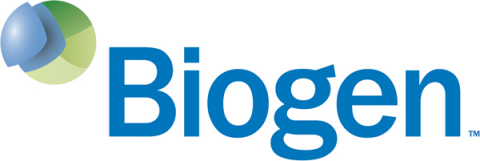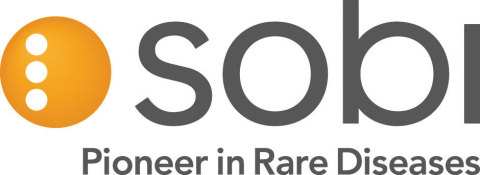CAMBRIDGE, Mass. & STOCKHOLM--(BUSINESS WIRE)--Newly published clinical data demonstrate that people on extended-interval prophylaxis regimens with ELOCTATE® [Antihemophilic Factor (Recombinant), Fc Fusion Protein] experienced low bleeding rates, Biogen (NASDAQ: BIIB) and Swedish Orphan Biovitrum AB (publ) (Sobi) (STO: SOBI) announced today. The interim results of this Phase 3, open-label extension study called ASPIRE were published in the online edition of Haemophilia, the journal of the World Federation of Hemophilia, the European Association for Haemophilia and Allied Disorders, and the Hemostasis & Thrombosis Research Society.
Study participants completing the Phase 3 A-LONG and Kids A-LONG studies were eligible to participate in ASPIRE. The results to-date show the majority of participants in ASPIRE, maintained or extended their dosing intervals between treatments compared to the A-LONG and Kids A-LONG studies. As of the interim analysis, the median time in the ASPIRE study was 80.9 weeks for adults and adolescents completing the A-LONG study, and 23.9 weeks for children completing the Kids A-LONG study. Inhibitor development is the primary endpoint of ASPIRE and no inhibitors were reported in any treatment groups. Through the interim ASPIRE analysis, adults and adolescents experienced annualized bleeding rates (ABRs) of 0.66, 2.03 and 1.97 in the individualized, weekly and modified prophylaxis arms, respectively. Children on individualized prophylaxis also experienced low bleeding rates, with an overall median ABR of 0.0 in children less than 6 years of age, and 1.54 for children ages 6 to 12. These results were consistent with data from the Phase 3 A-LONG and Kids A-LONG studies.
In addition to efficacy and safety endpoints, the publication also reports changes in prophylactic infusion frequency from the end of the A-LONG study through the interim analysis. Of the adults and adolescents who had previously been treated prophylactically and who remained in the study through the interim analysis (n=128), 72 percent maintained their prophylactic dosing interval and 22 percent lengthened and six percent shortened the time between infusions. Extension study participants could change treatment group at any time.
“The design of the ASPIRE study provides physicians a high degree of dosing flexibility, with the goal of reflecting their real-world treatment practices,” said Guy Young, M.D., Director of the Hemostasis and Thrombosis Center, Children’s Hospital of Los Angeles. “The results suggest prophylaxis with ELOCTATE shows efficacy and safety for the long-term treatment of hemophilia A.”
In ASPIRE, most participants received prophylactic treatment and were able to maintain protection against bleeding episodes with ELOCTATE consumption that was consistent with that observed in A-LONG and Kids A-LONG.
Growing Body of Evidence Further Validates ELOCTATE Clinical Profile
The
publication reported cumulative duration of treatment from the beginning
of the A-LONG and Kids A-LONG studies through the ASPIRE interim data
analysis. The median cumulative duration of treatment was 117.7 weeks
for adults and adolescents, and 51.5 weeks for children less than 12
years old.
Across age groups, safety results were consistent with the general hemophilia A population. There were no reports of serious allergic reactions or vascular clots. The most common adverse events (incidence of greater than or equal to five percent) included nasopharyngitis (common cold), arthralgia (joint pain) and upper respiratory infection.
“These published results add to the body of data demonstrating ELOCTATE’s safety profile and ability to provide protection against bleeding episodes,” said Wing-Yen Wong, M.D., vice president, Global Medical, Hematology and Immunology at Biogen. “As a company focused on bringing treatment advances to the hemophilia community, we are committed to gathering comprehensive, long-term clinical data across populations.”
“We remain focused on the goal of elevating hemophilia care globally, and we believe the publication of these data is important clinical research that contributes to the advancement of medical science in hemophilia,” said Birgitte Volck, M.D., Ph.D., senior vice president of Development and chief medical officer of Sobi. “These interim extension data help affirm the known efficacy and safety of ELOCTATE for the treatment of people with hemophilia A.”
About ASPIRE
ASPIRE is an open-label, non-randomized,
multi-year extension study for people who completed the pivotal, Phase 3
A-LONG or Kids A-LONG studies. The study enrolled 211 males, including
150 (98 percent) of those who completed A-LONG and 61 (91 percent) of
those who completed Kids A-LONG. The primary endpoint is the development
of inhibitors. Secondary endpoints include the annualized number of
bleeding episodes per subject, ELOCTATE exposure days and a
participant’s assessment of response to treatment of a bleeding episode.
About ELOCTATE
ELOCTATE® [Antihemophilic Factor
(Recombinant), Fc Fusion Protein], the first recombinant clotting factor
VIII therapy with prolonged circulation in the body, is approved in the
United States, Canada, Australia and Japan. It is indicated in the
United States for the control and prevention of bleeding episodes,
perioperative (surgical) management and routine prophylaxis in adults
and children with hemophilia A. ELOCTATE is not indicated for the
treatment of a bleeding disorder called von Willebrand disease.
Introduced in the U.S. in July 2014 and Japan in March 2015, ELOCTATE provides protection from bleeding episodes with the potential to extend the interval between prophylactic infusions. The therapy was developed using a process called Fc fusion, which is designed to prolong a therapy’s circulation in the body using a naturally occurring pathway. While Fc fusion has been used for more than 15 years, Biogen is the only company to apply it to the treatment of hemophilia.
Development of Factor VIII neutralizing antibodies (inhibitors) may occur following administration of ELOCTATE. Common adverse reactions (incidence of greater than or equal to 1 percent) reported in the registrational A-LONG study were arthralgia (joint pain) and malaise (general discomfort). For additional important safety information, and the United States full prescribing information, please visit www.ELOCTATE.com.
About Hemophilia A
Hemophilia A is a rare, chronic, genetic
disorder in which the ability of a person’s blood to clot is impaired,
due to missing or reduced levels of a protein known as factor VIII.
People with hemophilia A experience recurrent and extended bleeding
episodes that cause pain and irreversible joint damage. Some of these
bleeding episodes can be life-threatening. According to the World
Federation of Hemophilia, an estimated 142,000 people worldwide are
identified as living with hemophilia A.1 Prophylactic
infusions of factor VIII can temporarily replace the clotting factor
necessary to control bleeding and prevent new bleeding episodes.
Inhibitor development is a response of the body’s immune system that interferes with the activity of therapy. About 25 to 30 percent of people with severe hemophilia A develop inhibitors during their lifetime. Inhibitors typically develop after a median of 8-10 exposure days, though this number varies widely.2
About Biogen
Through cutting-edge science and medicine,
Biogen discovers, develops and delivers to patients worldwide innovative
therapies for the treatment of neurodegenerative diseases, hematologic
conditions and autoimmune disorders. Founded in 1978, Biogen is one of
the world’s oldest independent biotechnology companies and patients
worldwide benefit from its leading multiple sclerosis and innovative
hemophilia therapies. For product labeling, press releases and
additional information about the company, please visit www.biogen.com.
About Sobi
Sobi is an international specialty healthcare
company dedicated to rare diseases. Sobi’s mission is to develop and
deliver innovative therapies and services to improve the lives of
patients. The product portfolio is primarily focused on Haemophilia,
Inflammation and Genetic diseases. Sobi also markets a portfolio of
specialty and rare disease products for partner companies across Europe,
the Middle East, North Africa and Russia. Sobi is a pioneer in
biotechnology with world-class capabilities in protein biochemistry and
biologics manufacturing. In 2014, Sobi had total revenues of SEK 2.6
billion (USD 380 M) and about 600 employees. The share (STO: SOBI) is
listed on NASDAQ OMX Stockholm. More information is available at www.sobi.com.
Biogen Safe Harbor
This press release contains
forward-looking statements, including statements about the interim
analysis from ASPIRE, its publication, and the potential therapeutic
effect of ELOCTATE in people with hemophilia A treated with prophylaxis
regimens of ELOCTATE. These statements may be identified by words such
as “believe,” “expect,” “may,” “plan,” “potential,” “will” and similar
expressions, and are based on our current beliefs and expectations. Drug
development and commercialization involve a high degree of risk. Factors
which could cause actual results to differ materially from our current
expectations include the risk that unexpected concerns may arise from
additional or new data or analysis, regulatory authorities may require
additional data or information or further studies, or may fail to
approve, or refuse to approve, or may delay approval of expanded
indications or uses of our drug products, or we may encounter other
unexpected hurdles. For more detailed information on the risks and
uncertainties associated with our drug development and commercialization
activities, please review the Risk Factors section of our most recent
annual or quarterly report filed with the Securities and Exchange
Commission. Any forward-looking statements speak only as of the date of
this press release and we assume no obligation to update any
forward-looking statements, whether as a result of new information,
future events or otherwise.
1. World Federation of Hemophilia. Annual Global Survey 2012. http://www1.wfh.org/publications/files/pdf-1574.pdf.
Accessed July 2015.
2. Mariani G, Konkle BA, Kessler CM. Inhibitors
in Hemophilia A and B. In: Hoffman R, ed. Hematology: basic
principles and practice. 6th ed. Philadelphia, PA:
Saunders/Elsevier; 2013:1961-1970.




